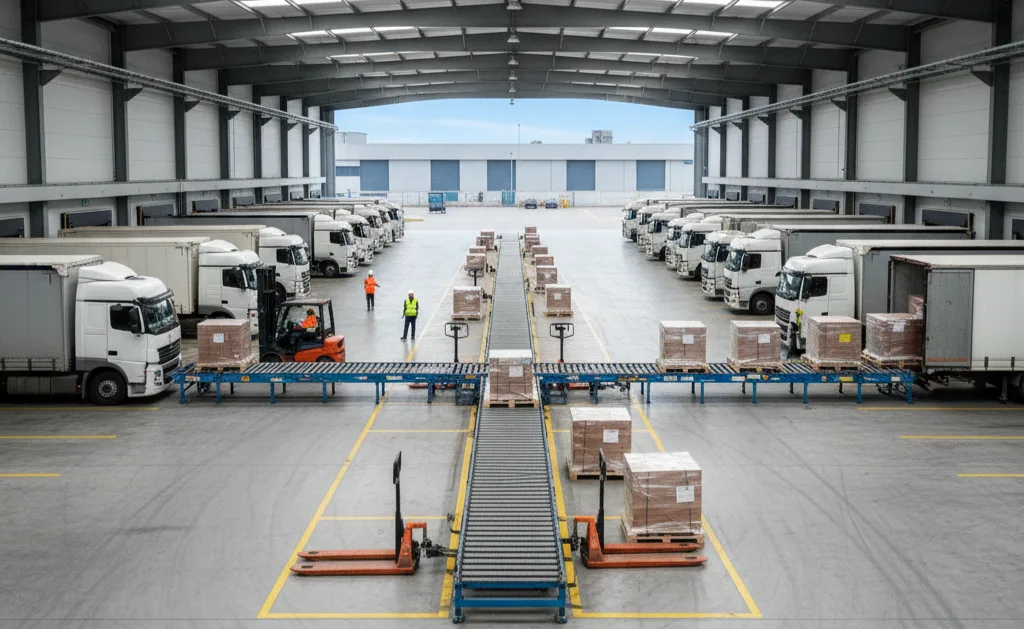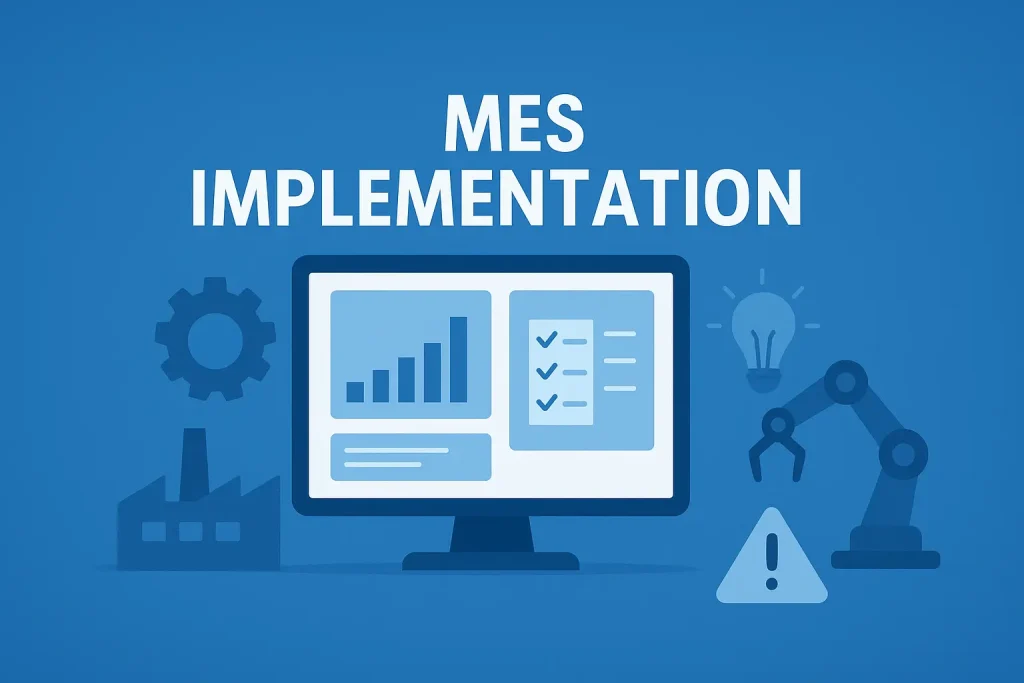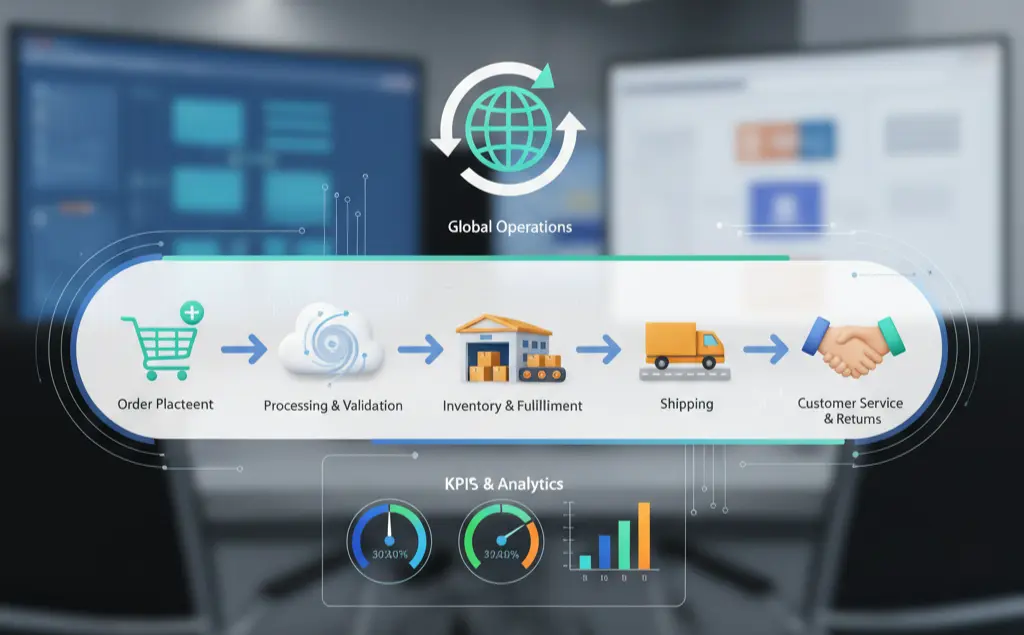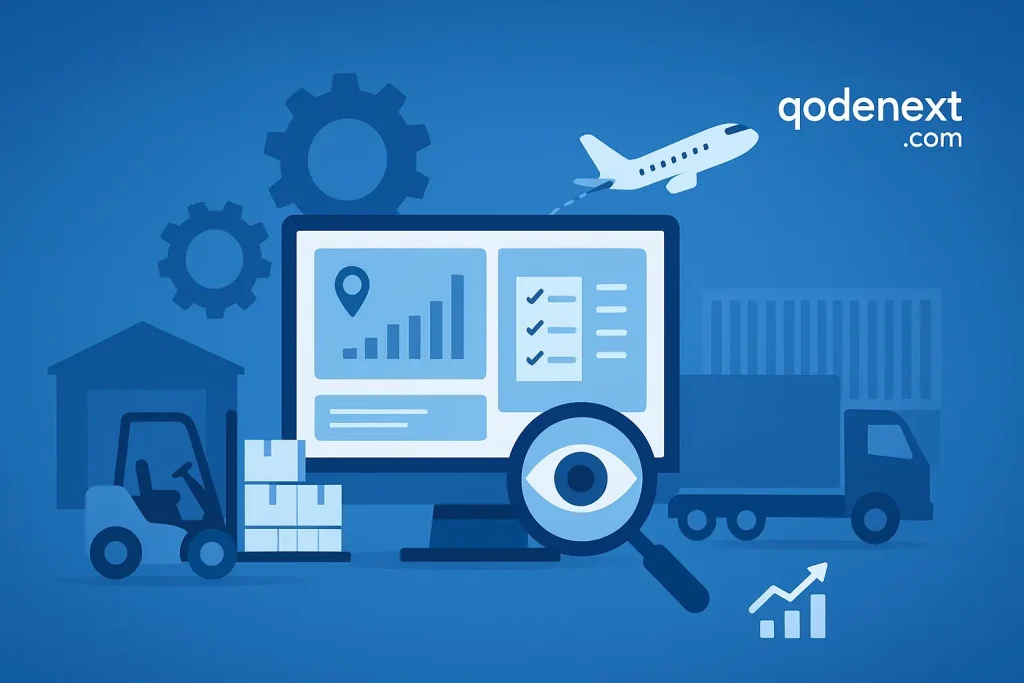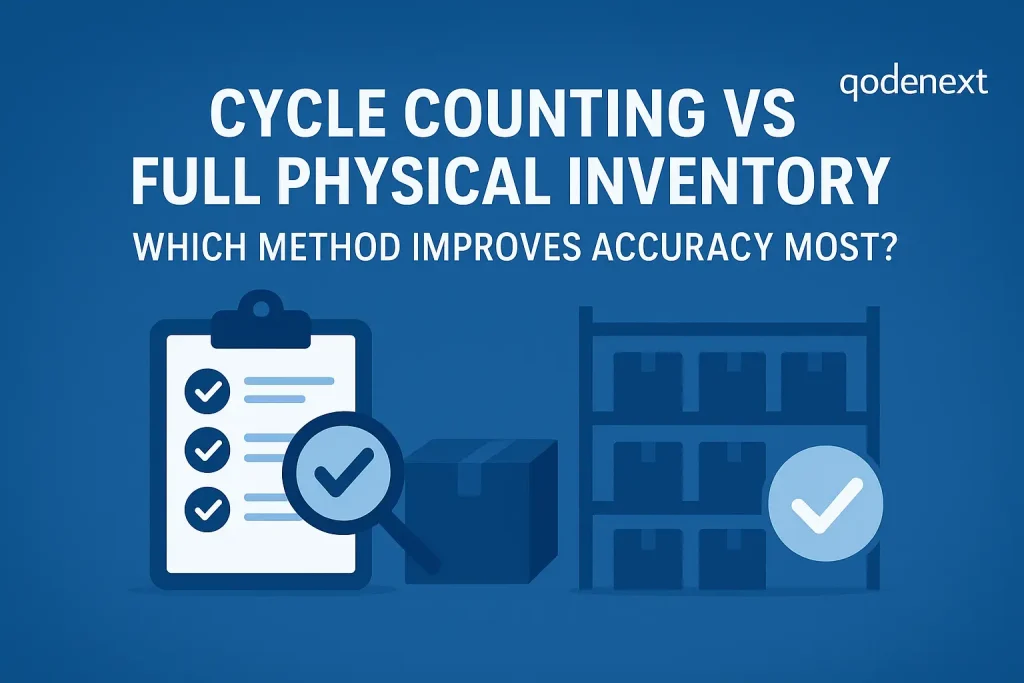
Every business that sells something – from handmade candles to heavy machinery – relies on one crucial asset: the goods it keeps on hand. Yet ask ten professionals the difference between inventory and stock, and you’ll probably get ten different answers.
Some will say they’re the same thing.
Others will insist they’re not.
The truth is that technically, there is a difference. But in modern business practice, the lines between the two are so blurred that spending too much time separating them often misses the bigger point – managing both efficiently.
Let’s look at what each term really means, where they overlap, and why understanding the inventory and stock difference matters less than managing them smartly.
Let’s begin.
What Do We Mean by Stock?
“Stock” is one of the oldest terms in commerce. It simply refers to the goods a business sells – the finished products that generate revenue.
- For a retailer, that could be clothing, electronics, or groceries.
- For a car dealership, it’s vehicles ready for sale.
- For a farmer, it could even mean livestock or crops awaiting harvest.
Stock is what sits on your shelves or in your store, ready to be sold to customers. It’s the final product in your business cycle – the point where effort meets income.
Now that we’ve defined stock, let’s move one step back to what inventory includes – because that’s where the difference between inventory and stock begins.
What Do We Mean by Inventory?
Inventory is a broader term. It includes not only the products ready for sale (the stock) but also everything else that supports the selling process – raw materials, work-in-progress items, and even spare parts or packaging materials.
In simple terms:
All stock is inventory.
But not all inventory is stock.
For example:
- In a furniture business, wood, nails, and varnish are inventory but not stock.
- The finished table or chair becomes stock once ready for sale.
So, if you’re managing production, you’ll always deal with inventory – not just stock.
Now that we’ve drawn the distinction, let’s answer the question everyone asks: what is difference between inventory and stock – and why does it matter (or not)?
Inventory and Stock Difference
The difference between inventory and stock mainly depends on context – especially the type of business you run.
| Business Type | What “Inventory” Includes | What “Stock” Means |
| Retailer | All products ready for sale | Same as inventory |
| Manufacturer | Raw materials + WIP + finished goods | Only finished goods ready for sale |
| Service business | May include supplies or spare parts | Usually none (no physical goods) |
In other words, “stock” often refers to finished goods, while “inventory” refers to everything held for use or sale. But in everyday business – particularly retail and e-commerce – both words are used interchangeably. That’s why if you overhear a manager say, “We need to check stock levels,” what they really mean is inventory levels.
So yes, technically there’s a difference between inventory and stock, but functionally, both terms drive the same business goal: having the right goods available at the right time.
Now that we’ve clarified that, let’s talk about why obsessing over the difference might actually be counterproductive.
Why the Difference Doesn’t Really Matter (Anymore)
In today’s fast-moving markets, the distinction between inventory and stock is more academic than practical. What truly matters is how well you manage either.
Here’s why:
- Technology Blurs the Line
Modern systems – from ERP platforms to warehouse management software – track everything under a single “inventory” umbrella. Whether it’s raw materials, in-transit items, or finished goods, they’re all visible in one dashboard. - Omnichannel Retail Has Changed Definitions
When a physical store, online marketplace, and app all pull from the same pool of products, separating “stock” for sale from “inventory” for transfer becomes impractical. Everything must be unified. - Supply Chains Are Dynamic
In lean and just-in-time models, goods move so fast through the chain that yesterday’s inventory becomes today’s stock – often within hours. - Finance and Operations Speak Different Languages
Accountants might say “inventory” for all tangible assets. Operations teams often say “stock” for sellable goods. Both are right – just from different perspectives.
At the end of the day, what matters isn’t terminology – it’s turnover, accuracy, and visibility.
Now that we’ve understood why the distinction fades in practice, let’s explore how companies manage both efficiently.
How Businesses Manage Inventory and Stock Together
Whether you call it inventory or stock, the management principles remain consistent: balance availability with cost. Too little leads to lost sales; too much ties up capital.
Here’s how leading businesses achieve that balance:
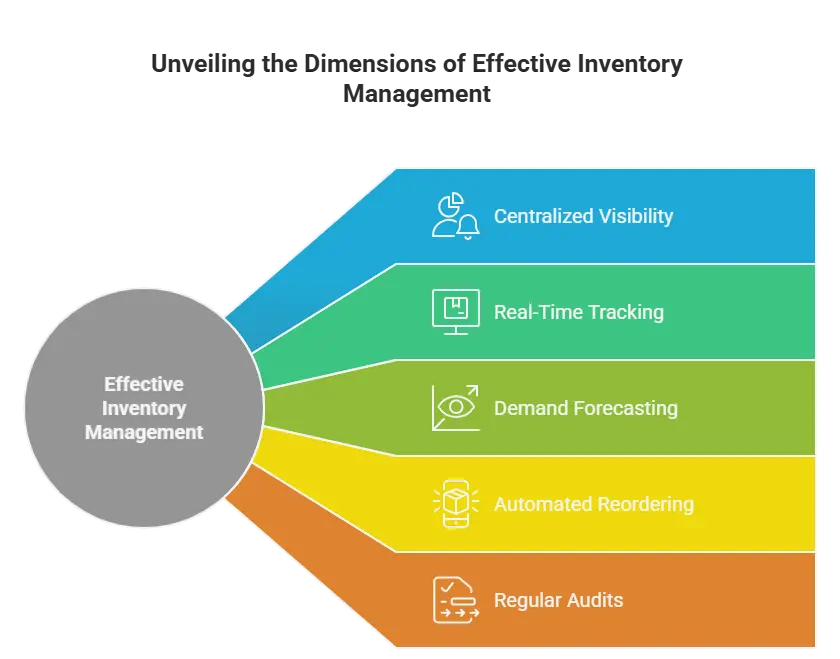
1. Centralized Visibility
Companies use integrated systems that unify inventory data across locations.
Zara’s parent company, Inditex, uses a centralized inventory platform that tracks stock movement across thousands of stores in real time – ensuring each store gets replenished from the nearest location.
2. Real-Time Tracking
Barcode scanners, RFID tags, and IoT sensors give live updates on item movement, enabling instant adjustments to purchase or replenishment plans.
3. Demand Forecasting
AI-driven analytics predict which products will sell faster, helping businesses adjust procurement and production – keeping both inventory and stock aligned.
4. Automated Reordering
Systems set reorder points so stock never runs out. Amazon’s fulfillment centers, for instance, use predictive algorithms to restock automatically before a shortage occurs.
5. Regular Audits
Even with automation, physical verification remains essential to maintain accuracy and detect shrinkage or loss.
By unifying how you view inventory and stock, you create one cohesive system instead of two disconnected ones.
Now that we’ve looked at management, let’s touch on how modern systems make this seamless.
How Modern Tools Simplify Inventory & Stock Management
Digital transformation has erased many of the boundaries between “inventory” and “stock.”
Here’s how technology bridges the gap:
- Cloud Inventory Platforms: Tools like Oracle NetSuite and Zoho Inventory give real-time updates across warehouses and retail points – perfect for businesses managing hybrid sales models.
- Warehouse Management Systems: Modern WMS software ensures that inventory (incoming or stored) and stock (ready for sale) are visible in the same interface.
- Integration with Sales Channels: E-commerce platforms like Shopify automatically adjust inventory counts as stock sells – ensuring your system always reflects reality.
- Analytics Dashboards: Managers now see everything – turnover, valuation, stock aging – in one place.
In short, businesses no longer need to choose between managing inventory and stock. They just need to manage data effectively.
Now that we’ve seen the role of technology, let’s look at how to decide which metrics matter most.
Key Metrics to Monitor for Better Control
Tracking the right KPIs ensures your operation stays healthy – regardless of terminology.
Here are a few essential ones:
| Metric | What It Tells You | Why It Matters |
| Inventory Turnover Ratio | How fast inventory converts into sales | High ratio = efficient movement |
| Days of Inventory on Hand (DOH) | How long stock lasts before restocking | Helps balance demand and supply |
| Stockout Rate | How often products run out | Reflects planning accuracy |
| Carrying Cost | Cost of holding unsold goods | Affects cash flow and profitability |
| Shrinkage Rate | Inventory lost due to damage/theft | Measures operational control |
Focusing on these metrics ensures your business manages flow, not just definitions. Now that we’ve discussed performance, let’s settle the debate once and for all.
Inventory vs. Stock: The Verdict
So, what’s the final word on the inventory and stock difference?
Technically:
- Inventory includes raw materials, WIP, and finished goods.
- Stock usually means finished goods ready for sale.
Practically:
- In modern commerce, the distinction rarely impacts operations.
- Most digital systems, reports, and even legal frameworks use the terms interchangeably.
So if you’ve ever wondered what is difference between inventory and stock, the answer is: it depends on perspective, not on a fixed rule. What truly matters is control, visibility, and the ability to turn goods faster than competitors. As one supply chain director once put it, “Call it what you want. Just don’t let it sit still.”
Conclusion
In the end, the debate around the inventory and stock difference is more about terminology than transformation. Whether you call it stock, inventory, or merchandise, what truly drives success is how efficiently you manage it – how fast it moves, how accurately it’s tracked, and how well it aligns with customer demand.
So don’t get stuck on the semantics. Whether it’s inventory or stock, the goal is the same: keep it moving, keep it visible, and keep it profitable.
FAQs: Inventory vs. Stock: What Every Business Owner Should Really Know
1. What is difference between inventory and stock in accounting terms?
In accounting, inventory is a current asset on the balance sheet that includes raw materials, WIP, and finished goods. Stock refers specifically to finished products ready for sale.
2. Do service-based businesses have inventory or stock?
They typically have inventory (like spare parts or supplies) but not stock, since they don’t sell tangible goods.
3. How do e-commerce companies track inventory and stock?
They use cloud-based systems that update in real time as sales occur – ensuring inventory and stock levels remain accurate across multiple channels.
4. Why do some companies still differentiate the two?
Manufacturers separate them for clarity – raw materials are managed differently than finished goods. Retailers often combine both under one system.
5. Which software helps manage both inventory and stock?
Tools like Oracle NetSuite, Zoho Inventory, SAP, and TradeGecko manage the full lifecycle – from purchase to sale to return.
6. Is stock the same thing as inventory?
it’s mostly yes — all stock is inventory, but you can’t say all inventory is stock. Consider inventory as the entire range of goods that a business possesses (raw materials, products in progress, end products) and stock as the end goods that are ready to be sold. In reality, a lot of companies treat them as the same thing, which is why the differentiation will rarely, if ever, change the way you run your business.
7. how does omnichannel retail complicate stock and inventory definitions?
Goods are moving rapidly between channels (store shelf, online sale, mobile app order) — and often from one pool of inventory, and it’s getting more and more difficult to differentiate “stock for store” vs. “stock for online” vs. “raw materials” — it’s all blending together. That’s why more and more companies now see inventory and stock as one and the same, and concentrate on visibility, agility and accuracy.
8. Which metric matters more: inventory turnover or days of inventory on hand?
They’re both important and really just two different ways of looking at the same thing. Inventory turnover, or how many times you sell and replace inventory within a time frame, reveals how fast items are moving off your shelves. DOH tells you how long items remain in your system before being sold, while Inventory Turnover (IT) tells you how many times you turn over your inventory during a given time period. Use them both – a high turnover and a low DOH indicate good flow. If one’s amiss, dig into why (slow demand? Too much stock?).

